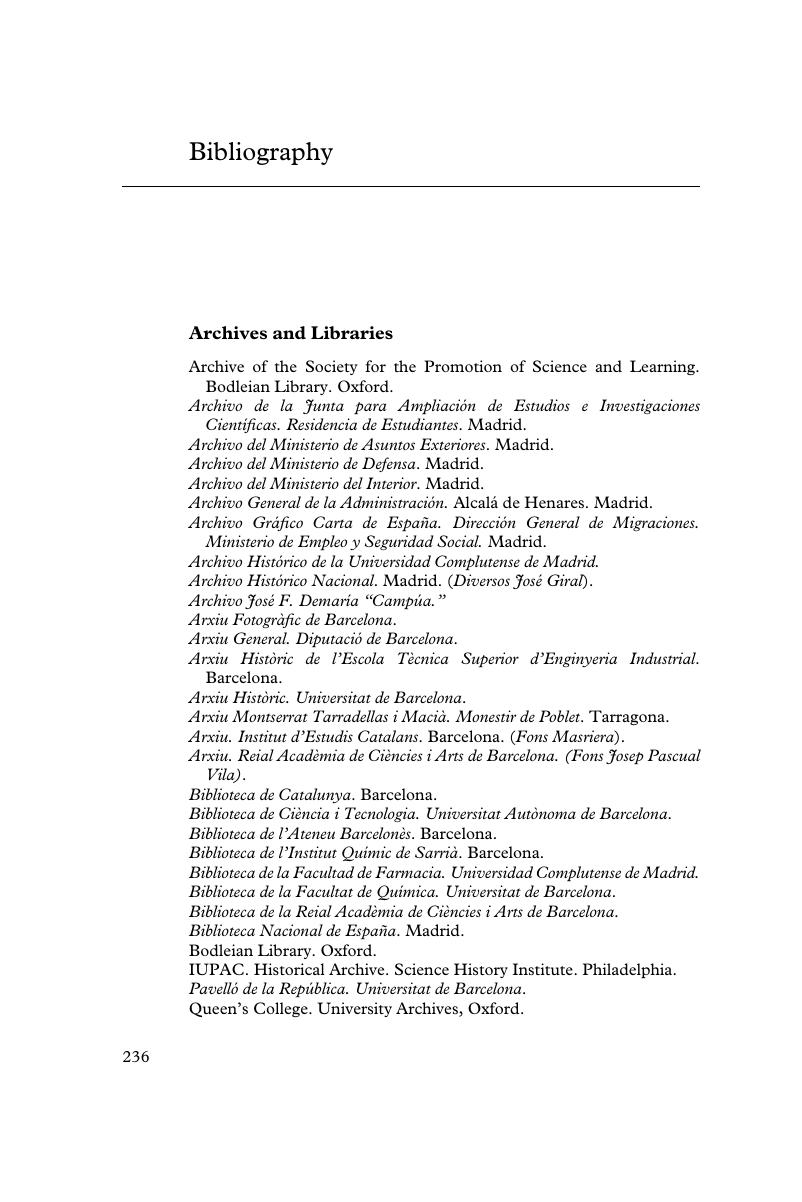Book contents
- The Politics of Chemistry
- Science in History
- The Politics of Chemistry
- Copyright page
- Dedication
- Contents
- Figures
- Preface
- Acknowledgements
- Chronology
- Abbreviations
- Introduction
- 1 Dreams of Modernity
- 2 A Republican Science
- 3 War Weapons
- 4 Totalitarian Ambitions
- 5 Autarchic Ambiguities
- 6 Technocratic Progress
- 7 Liberal Dissent
- Conclusion: The Moral Ambiguity of Chemistry
- Bibliography
- Index
- References
Bibliography
Published online by Cambridge University Press: 12 August 2019
- The Politics of Chemistry
- Science in History
- The Politics of Chemistry
- Copyright page
- Dedication
- Contents
- Figures
- Preface
- Acknowledgements
- Chronology
- Abbreviations
- Introduction
- 1 Dreams of Modernity
- 2 A Republican Science
- 3 War Weapons
- 4 Totalitarian Ambitions
- 5 Autarchic Ambiguities
- 6 Technocratic Progress
- 7 Liberal Dissent
- Conclusion: The Moral Ambiguity of Chemistry
- Bibliography
- Index
- References
Summary

- Type
- Chapter
- Information
- The Politics of ChemistryScience and Power in Twentieth-Century Spain, pp. 236 - 267Publisher: Cambridge University PressPrint publication year: 2019



